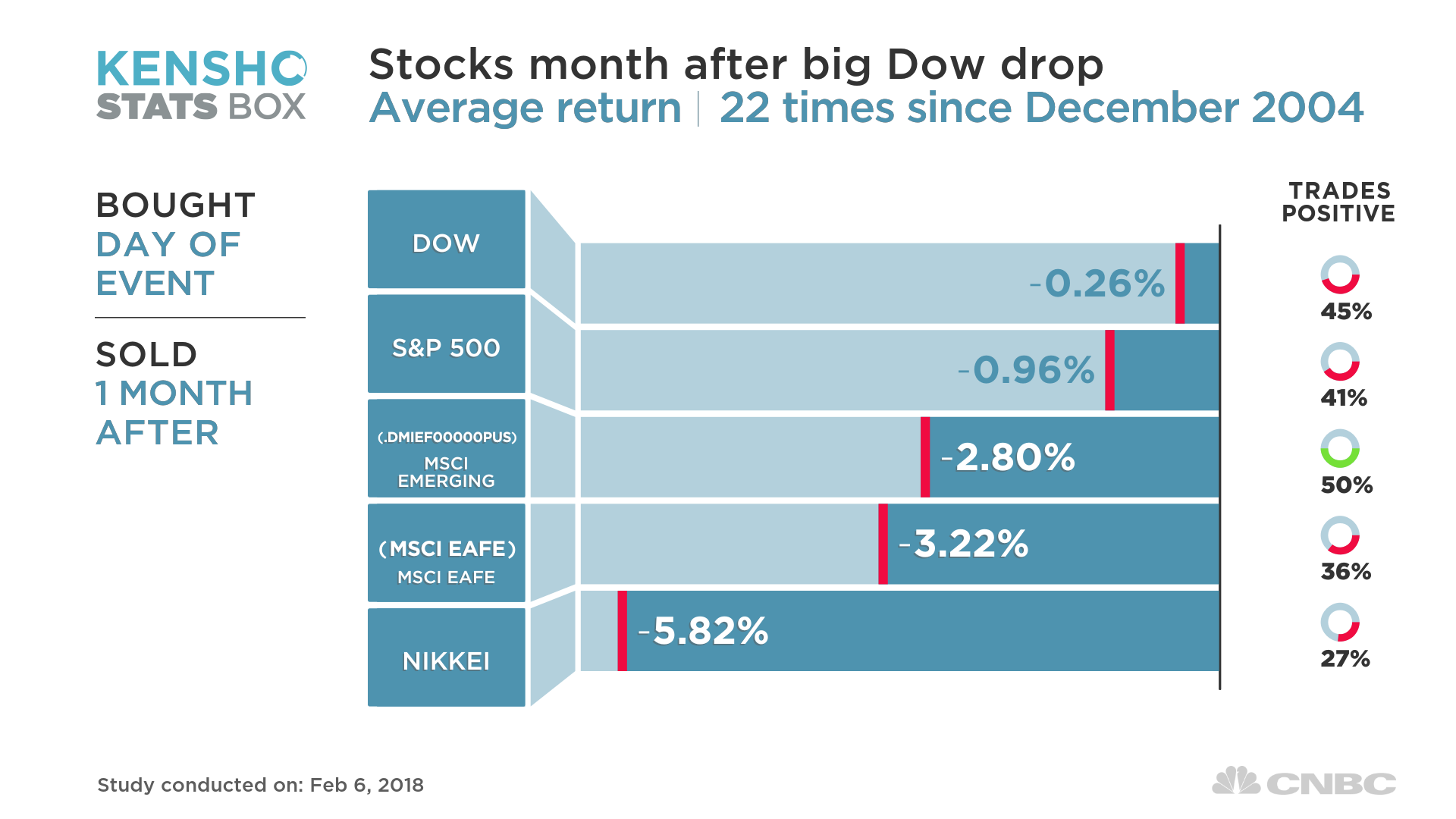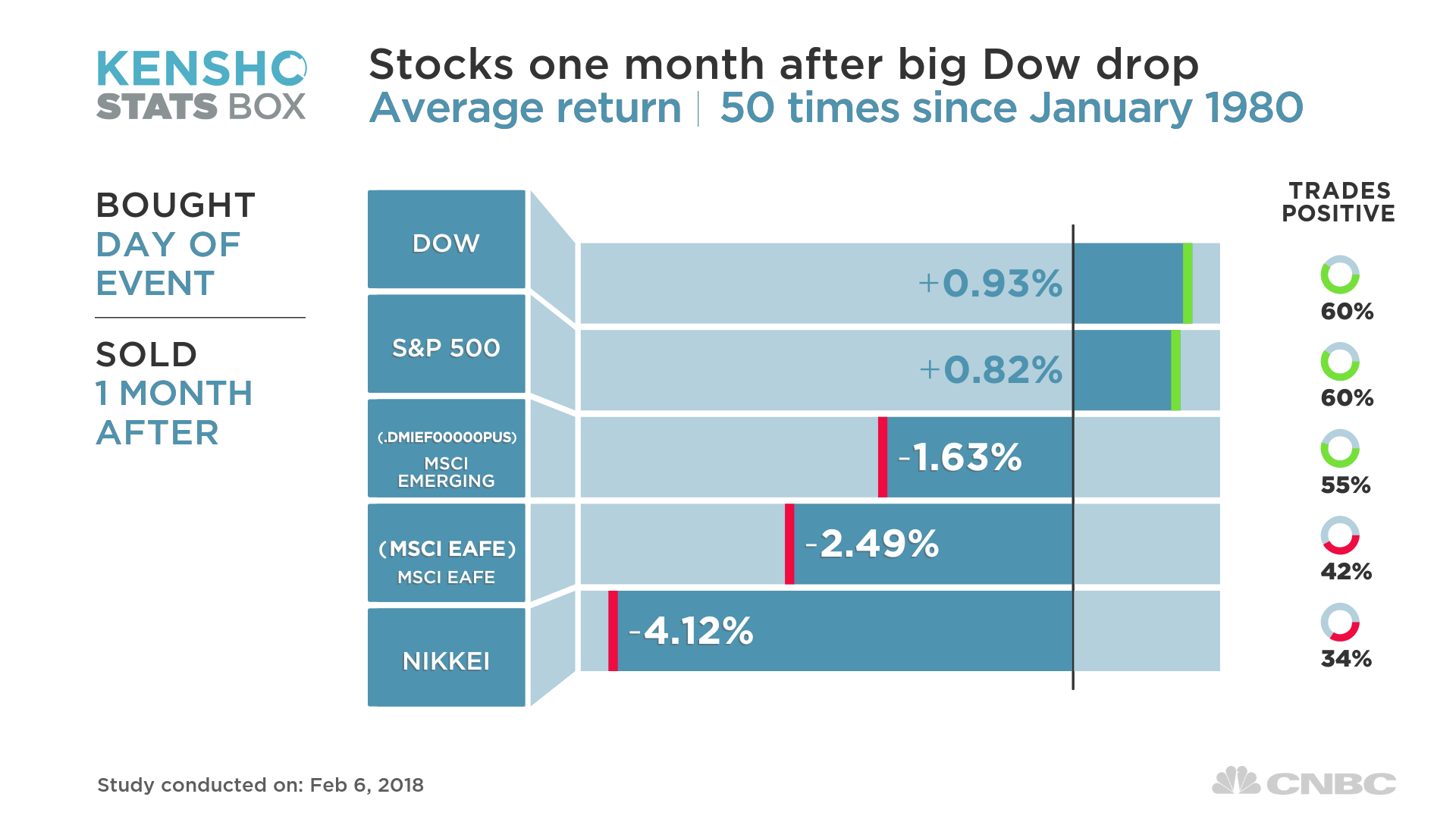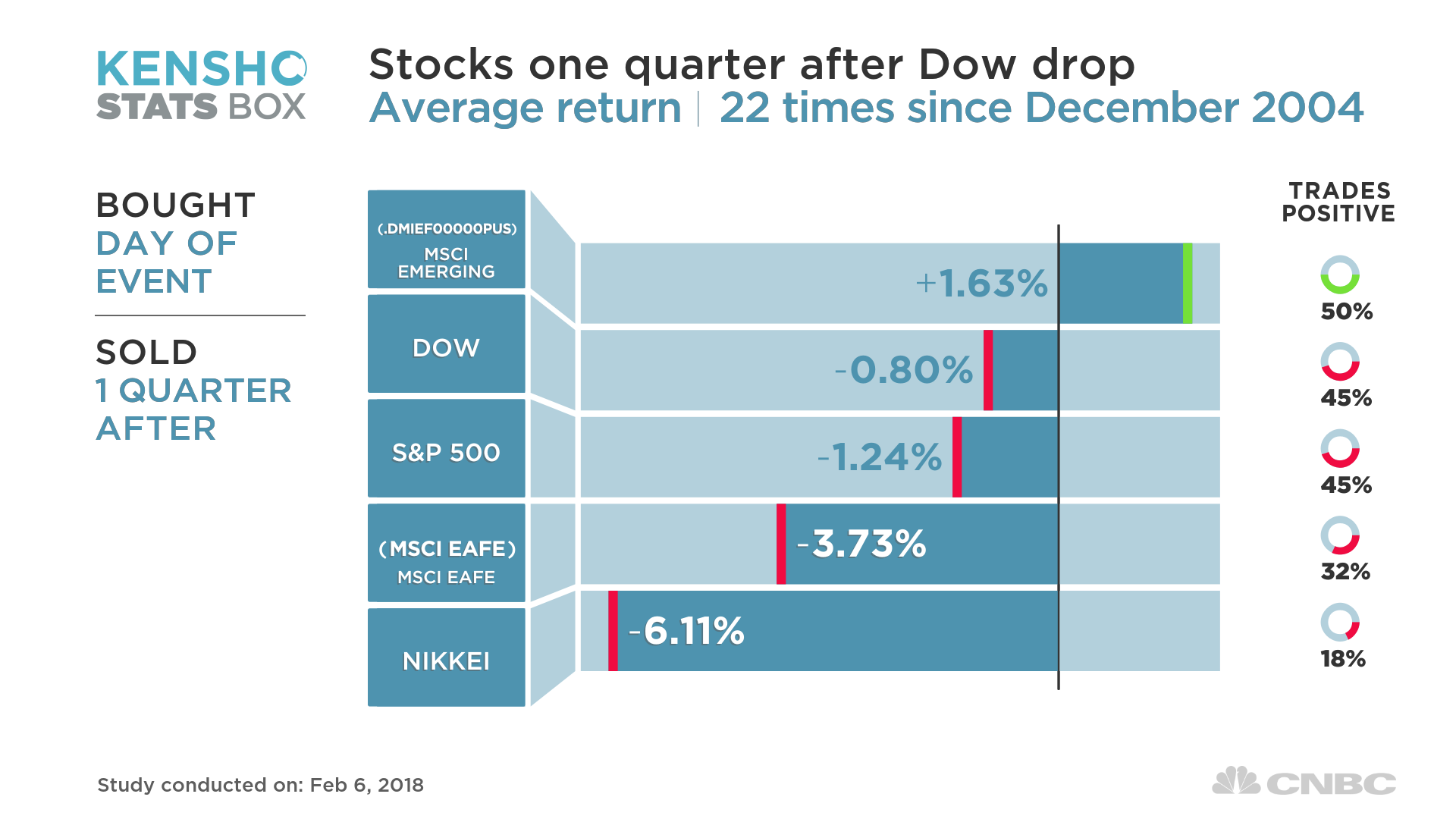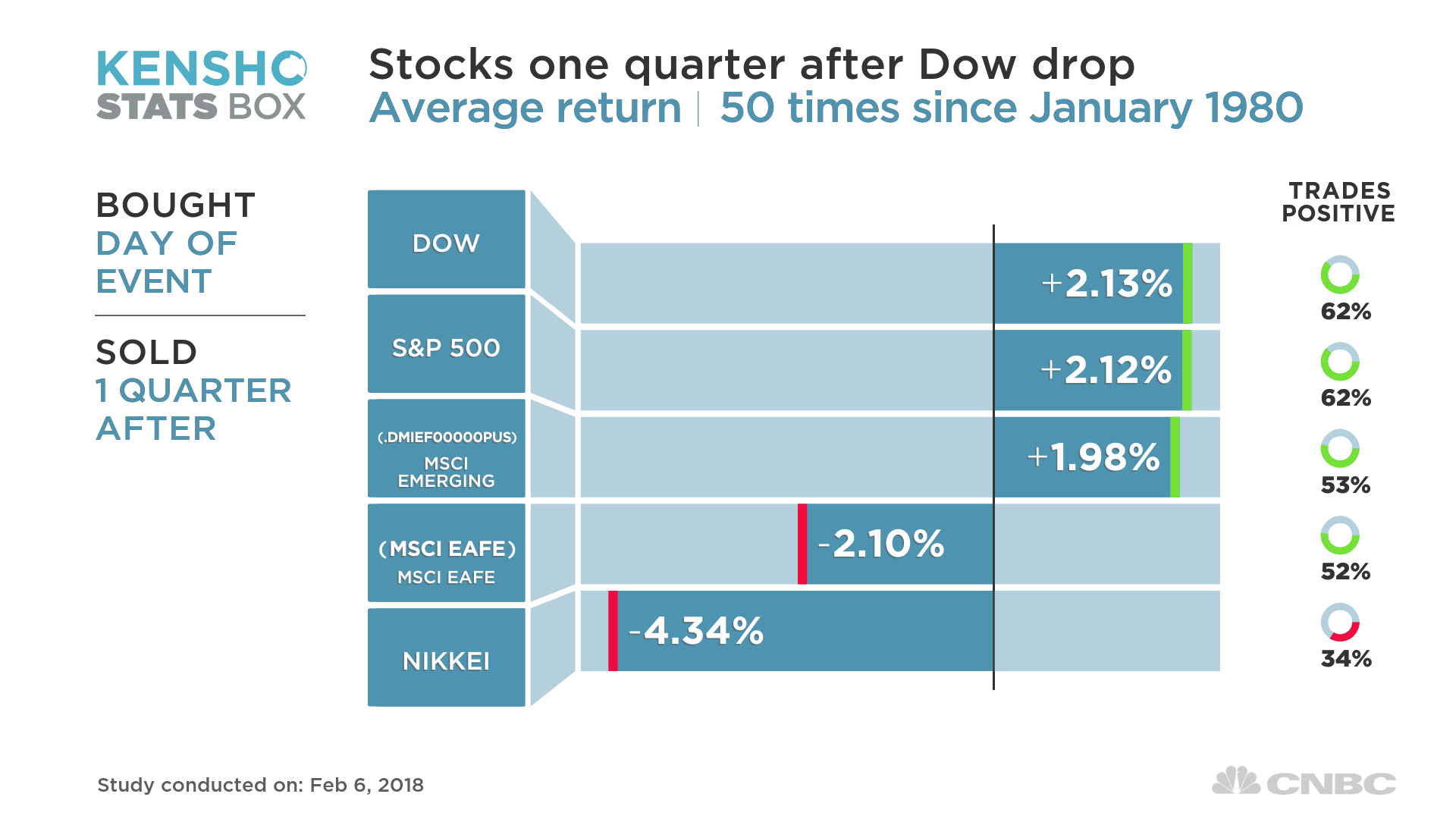
Recent buying in foreign stocks has been driven by two factors: performance-chasing after a great year for international stock markets in 2017, and fears that the U.S. stock market is the most overvalued in the world. But if investors think that diversifying their stock portfolio globally will help mitigate the portfolio hit from a plunge in the Dow Jones Industrial Average, they’re wrong.
At least in the short-term, stock market history shows that after a plummeting Dow Jones Industrial Average, the U.S. stock market is more likely to bounce back quickly than foreign stock indexes. For long-term investors, the argument for diversifying overseas remains strong — “set and forget” has the best long-term track record of delivering investment returns. Selling and believing you are smart enough to figure out when to buy again — never a good idea.
It was the size and speed of the move down that caught investors by surprise, but investors should not be taken by surprise if the decline in global stocks lingers.
Monday’s Dow plunge was the largest point decline ever, though by the more important measure of percentage decline, it wasn’t nearly as catastrophic. Using Kensho, a hedge fund trading analytics tool, we analyzed the big Dow moves down back to 1980 and, in the more recent period, back to 2004. We limited the screen to Dow declines of at least 6 percent or more that occur in five days or less. Based on the data going all the way back to 1980, U.S. stocks are a much better rebound bet than international stocks. But the picture gets more complicated using the more recent history, back to only 2004.
Here is how two of the flagship international equity benchmarks — the MSCI EAFE Index and MSCI Emerging Markets Index — and the Japanese Nikkei Index react relative to the U.S. stock indexes.




























